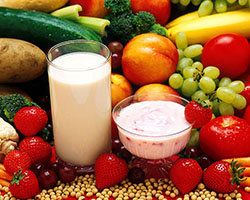More Than Just Taste
Think about each of your favorite foods. Maybe you like pizza, or broccoli, or ice cream. What kinds of taste do each of these foods have? Would you be able to group each of your favorite foods into one of just five taste categories? Five doesn't seem like enough categories. But that may be because the taste of a particular food is a result of the combined stimulation of all taste buds that are activated.

Plus, beyond activation of the taste buds, other factors affect how we sense food in our mouth. The texture, temperature, coolness (produced by menthol – think minty), and hotness (spicy) of the food also is sensed by receptors on the tongue and throughout the mouth, but not within the taste buds. The combined sensation of taste bud activation and these other factors produces the flavor of food.
We are still ignoring a crucial part of the flavor experience – smell. The flavor of some foods comes primarily from the smell of it. Think about when you have a stuffed-up nose during a head cold – food doesn’t quite taste the same, right? When we chew and swallow, odor molecules from our food goes up behind our palate and through the back of our nasal cavity (like smoke going up a chimney). These molecules activate odor receptors located here, of which there are nearly 400 different types.

It is the activation of these receptors that primarily affects the flavor of food. This is called retronasal olfaction and this kind of “smelling” is a different from sniffing our food. Our brain actually distinguishes between odors that reach these receptors from the food in our mouth and that which is inhaled directly through the nose. If the sense of smell is lost, because either odor receptors in the nasal cavity or the connection between the nasal cavity and the brain is severed, then the sense of taste will be disturbed as well.
Although taste and smell make up the majority of the flavor experience, the rest of the senses (vision, hearing, touch) are also involved. Experiments have shown that color of food affects the flavor we perceive, as does the sound the food makes as we chew it.
Additional images via Wikimedia Commons. Nose and mouth image by Genusfotografen (Tommas Gunnarsson).
Read more about: How Do We Sense Taste?
Bibliographic details:
- Article: Smell and Taste
- Author(s): Dr. Biology
- Publisher: Arizona State University School of Life Sciences Ask A Biologist
- Site name: ASU - Ask A Biologist
- Date published:
- Date accessed:
- Link: https://askabiologist.asu.edu/smell-taste
APA Style
Dr. Biology. (). Smell and Taste. ASU - Ask A Biologist. Retrieved from https://askabiologist.asu.edu/smell-taste
Chicago Manual of Style
Dr. Biology. "Smell and Taste". ASU - Ask A Biologist. . https://askabiologist.asu.edu/smell-taste
Dr. Biology. "Smell and Taste". ASU - Ask A Biologist. . ASU - Ask A Biologist, Web. https://askabiologist.asu.edu/smell-taste
MLA 2017 Style

Smell is very important to your sense of taste.
Be Part of
Ask A Biologist
By volunteering, or simply sending us feedback on the site. Scientists, teachers, writers, illustrators, and translators are all important to the program. If you are interested in helping with the website we have a Volunteers page to get the process started.

